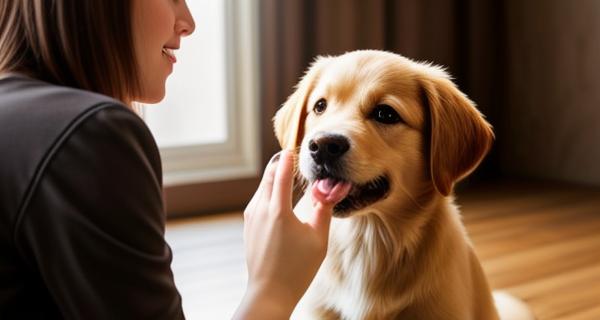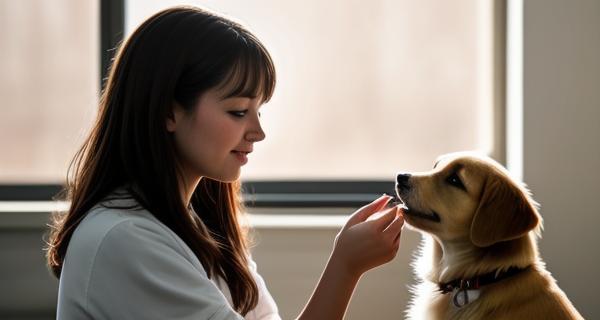Effective Puppy Training: A Comprehensive Guide
Positive Reinforcement Techniques
Positive reinforcement techniques are the cornerstone of effective puppy training—transforming frustration into fun and building a strong bond between you and your furry companion. Rather than shouting commands or relying on punishment, this humane approach rewards desired behaviors, making learning enjoyable and fast. From housebreaking to walking politely on the leash, applying the right puppy training tips creates a foundation of trust that lasts a lifetime.
Start with consistency—puppies thrive on routine. Use immediate praise, treats, or favorite toys as powerful reinforcers right when they follow commands like “sit,” “stay,” or “come.” Your quick reaction cements the connection between action and reward, teaching your puppy what’s expected with clarity and kindness. Avoid mixed signals by using clear verbal cues paired with consistent gestures—this helps puppies understand faster and reduces confusion.
Short, engaging training sessions of 5 to 10 minutes keep young minds focused without overwhelming them. Puppies have short attention spans, so frequent breaks prevent frustration and build confidence through small wins. Use high value rewards—think bite sized cheese or enthusiastic praise—to motivate even the most distracted pup during those sessions.
Crate training, when paired with positive reinforcement, becomes a safe space that reduces anxiety and supports potty training. Treat the crate like a cozy den: add their favorite blanket, gradually increase time inside, and always leave a door open for comfort. Praise calm behavior inside as soon as they relax—this replaces fear based associations with security and trust.
Socialization is another vital pillar. Expose your puppy to diverse people, sounds, environments, and other friendly dogs in controlled, positive experiences. When they approach new sights or noises without hesitation—and you reward bravery with smiles and treats—they grow confident, not fearful. This early exposure shapes a well adjusted companion ready for life’s adventures.
Potty training thrives on routine and immediacy. Watch for warning signs—sniffing, circling—and guide your puppy to their spot the moment they go. Celebrate immediately with hugs, kisses, or a special treat. If accidents happen, stay calm; clean thoroughly and avoid scolding. Puppies learn from context, not anger—consistency prevents stress and builds reliability.
Leash manners matter too. Use treats held near your shoulder to encourage walking beside you without pulling. As they take steps forward, reward gently—even a verbal “good job” becomes motivation. Over time, gentle redirection replaces corrections with clear guidance.
By embracing positive reinforcement techniques, you’re not just training—you’re nurturing a lasting friendship rooted in respect and joy. Every treat, praise, and patient moment strengthens the bond between human and puppy, turning each training session into a memorable step toward a lifelong companion.
Basic Obedience Commands
Effective Puppy Training: A Comprehensive Guide
The foundation of every joyful, well adjusted dog starts with puppy training tips—especially basic obedience commands that shape behavior, build trust, and lay the groundwork for lifelong harmony between pets and owners. Whether you’re welcoming a curious new puppy into your home or refining their skills, mastering fundamental obedience is non negotiable for safe, happy living.
Learning basic obedience commands isn’t just about control—it’s about connection. Commands like “sit,” “stay,” “come,” “down,” and “heel” give puppies clear boundaries while reinforcing confidence. These cues become invisible threads that keep your puppy safe in public spaces, prevent unwanted behaviors, and lay the groundwork for more advanced training down the line. But how do you turn rehearsed words into reliable actions?
Starting with **sit** is key. This simple command teaches impulse control—critical when excitement runs high. Hold a treat above your puppy’s nose, then slowly move it back over their head. As they lift their nose and naturally lower into a seated position, say “sit” firmly and reward immediately. Repeat consistently—within seconds builds neural pathways fast.
Practicing “stay” deepens self control. Begin with short durations: ask your pup to sit, take a step back, hold out your palm like a stop sign, and say “stay.” Increase time gradually while offering praise or rewards when they hold position. Consistency here builds trust—puppies thrive on routine and clear expectations.
“Come” is arguably the most life saving command. Use it in low stress settings first: call your puppy’s name paired with an upbeat tone, “Come! Good girl!” When they reach you, erupt into joy—a high pitched cheer or quick clap—then reward. Never scold if delayed; instead, build positive associations with coming to you.
“Down” and “heel” complete the essentials: “down” teaches calm submission, ideal for meals, greetings, and car entries; “heel” ensures reliable leash manners during walks. Pair these cues with repetition, patience, and immediate reinforcement—timing is everything.
Beyond commands, socialization fuels confidence. Introduce your puppy gently to new sounds, surfaces, people, and environments early—this builds emotional resilience. Consistency across the household and gentle routine turns obedience from chore into comfort.
Mastering basic obedience isn’t a sprint—it’s a daily practice that shapes behavior, safety, and companionship. With patience, clarity, and positive reinforcement, every puppy learns not just commands, but respect. Start simple, stay consistent, and watch your little learner grow into a well trained companion who looks forward to every new day—and every command. This foundation of effective puppy training isn’t just about obedience; it’s the start of a lasting bond built on trust, communication, and joy.
Potty Training & Crate Training
Effective Puppy Training: Mastering Potty Training & Crate Training
Raise a confident, well mannered puppy with proven potty training tips and smart crate training — the foundation of lifelong obedience. Whether you’re welcoming your first furry friend home or refining existing habits, consistent, science backed puppy training tips deliver lasting results that save stress and strengthen your bond.
Start with **potty training**: consistency is key. Puppies thrive on routine — aim to take your pup outside immediately after waking up, eating, drinking, or playing. Use a dedicated cue like “go potty” every time, and celebrate success instantly with praise or small rewards. When accidents happen (they will), stay calm—avoid scolding, as fear weakens trust. Instead, clean thoroughly to remove scent traces and focus on prevention. Incorporating interactive training apps or printable schedules can reinforce progress while keeping the process fun and engaging for both you and your puppy.
Equally vital is **crate training** — not punishment, but a source of comfort and secure space where crate training tips ensure your dog feels safe during alone time. Choose an appropriately sized crate where your pup stands, turns, and lies comfortably. Introduce it gradually: start by leaving the door open with treats nearby, then close briefly while monitoring curiosity. Gradually increase duration as confidence grows, always ending on a positive note. Pairing the crate with cozy bedding and favorite toys transforms it into a welcoming sanctuary, turning “confined” into “cozy corner.”
Pair these core elements with patience — puppies learn at their own pace. Realize setbacks are normal; reset gently without frustration. Leverage consistency and positive reinforcement across every session, and watch your puppy develop self control and trust. Digital tools like training trackers or time lapse videos can help visualize progress, keeping motivation high for both owner and pet.
Prioritizing effective potty training and crate training is more than discipline—it’s about building a stable foundation that supports responsible ownership, emotional well being, and lasting companionship. Embrace practical, compassionate puppy training tips today, and give your pup the gift of confidence, comfort, and care that lasts a lifetime.
Socialization & Addressing Behavioral Issues
Effective Puppy Training: Socialization & Addressing Behavioral Issues
Raising a well adjusted puppy isn’t just about obedience—it’s about shaping confidence, reducing anxiety, and building lifelong bonds. At the heart of successful puppy training lies **puppy training tips** centered on early socialization and proactive behavioral guidance. Whether your new companion is just arriving home or you’re refreshing techniques after years, mastering these core areas sets the stage for a happy, well behaved dog.
Socialization is nonnegotiable during those critical first 16 weeks—the window when puppies are most receptive to new experiences. Introducing your puppy gently but consistently to people of all ages, breeds, sounds, environments, and even gentle animals builds emotional resilience. Take them on calm, controlled walks through quiet streets or parks; visit dog friendly cafes or playdates with vaccinated friends’ pups. Play based exposure—like meeting children in safe spaces or exchanging treats with strangers—creates positive associations that last a lifetime. Avoid overwhelming your puppy; balance novelty with patience, always reading their body language for signs of stress.
Parallel to socialization is addressing behavioral issues before they take root. Jumping up, nipping, excessive barking, and fear based reactivity are common but manageable when caught early. Instead of punishment or yelling—tools that breed fear—use positive reinforcement. Teach “gentle” by rewarding calm behavior with treats, praise, or a tug toy when paws stay on the floor. For jumping, simply turn away and wait for four paws to settle before rewarding. If barking spirals into nuisance noise, redirect focus with a “quiet” cue paired with a reward, reinforcing silence as the quieter response. Consistency is key—every family member must follow the same rules to avoid confusion and encourage trust.
Effective puppy training thrives on routine, creativity, and empathy. Incorporate play into commands: turn “sit” into a mini game with a lure and reward, or use fetch to practice recalls in low distraction zones. Rotate toys, environments, and people so learning stays fresh and fun. Most importantly, celebrate small wins—every successful wait for the leash or calm interaction strengthens neural pathways tied to good behavior.
Remember: puppies mirror human energy. Stay calm, patient, and present. Mistakes won’t last—but consistent, kind guidance transforms them into growth. With intentional **puppy training tips** focused on socialization and behavioral awareness, you’re not just training a pet—you’re nurturing a confident, eager to please companion ready to thrive in any world. The foundation you build today shapes the friendship that lasts forever.




